Dr. Phil Zeltzman’s Blog
Hazel survives a horrible accident
Hazel, a very cute 6 month old chocolate Lab, was hit by a family member’s pickup truck in her own driveway…
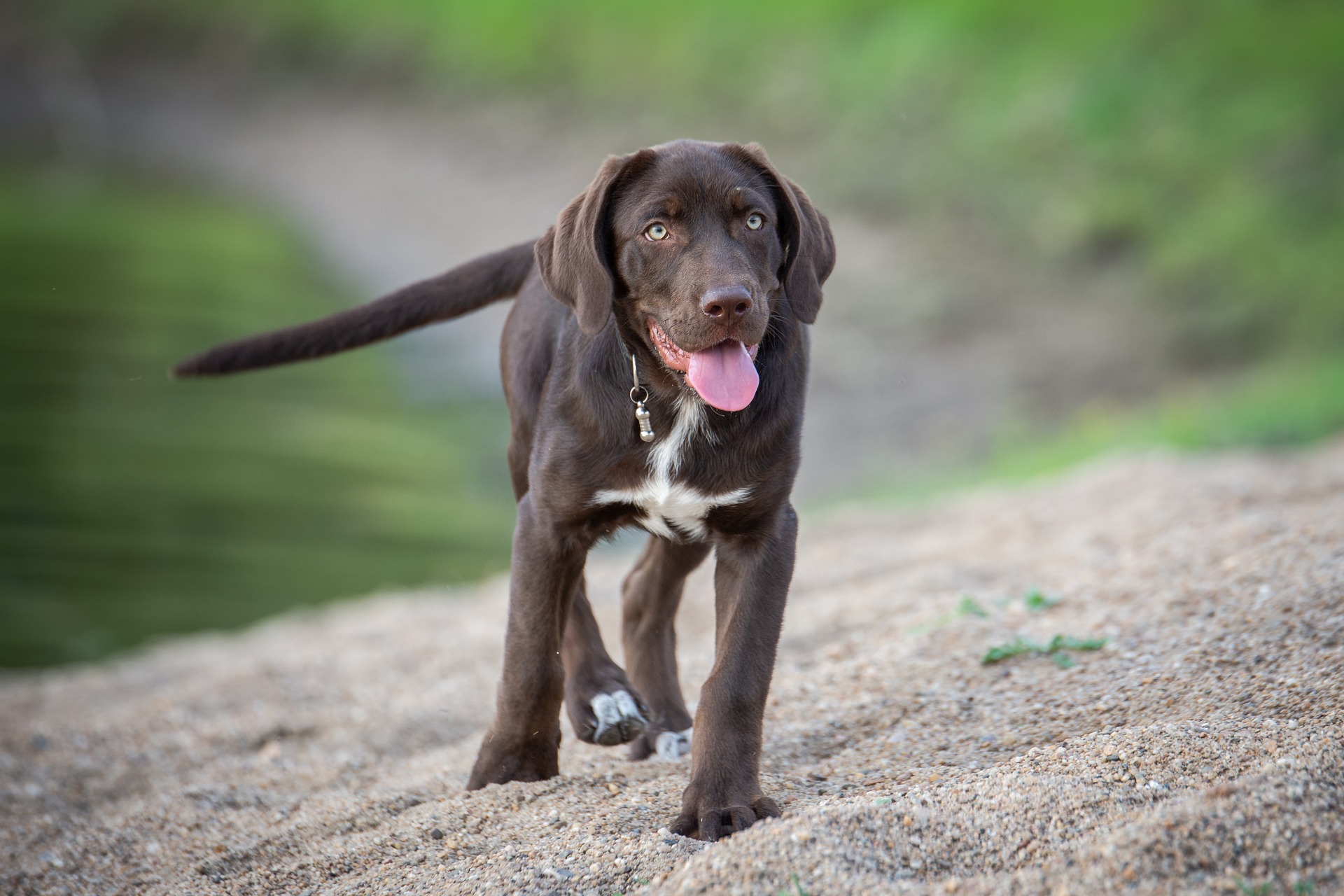
You may want to skip the next sentence & jump to the next paragraph if you are a sensitive soul… You have been warned… Her owner said the car ended up being “parked on Hazel.”
After everybody calmed down, the end result was a pup in severe pain, holding a back leg up and a big skin laceration.
Hazel was rushed to her family vet. X-rays showed a fracture of the end of her femur (thigh bone).
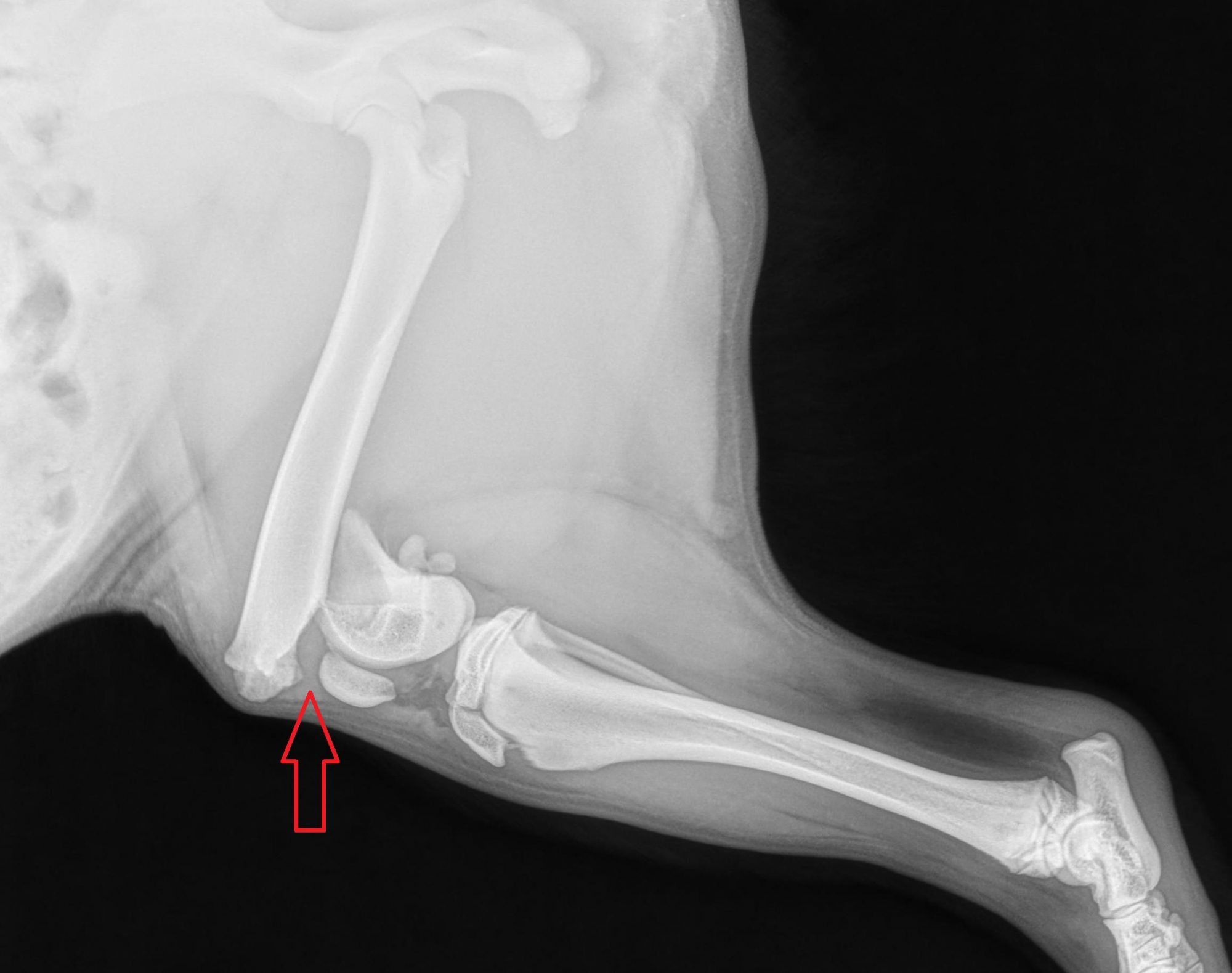
Miraculously, her chest & belly X-rays and the rest of her physical exam were normal. Her preop blood work was also normal.
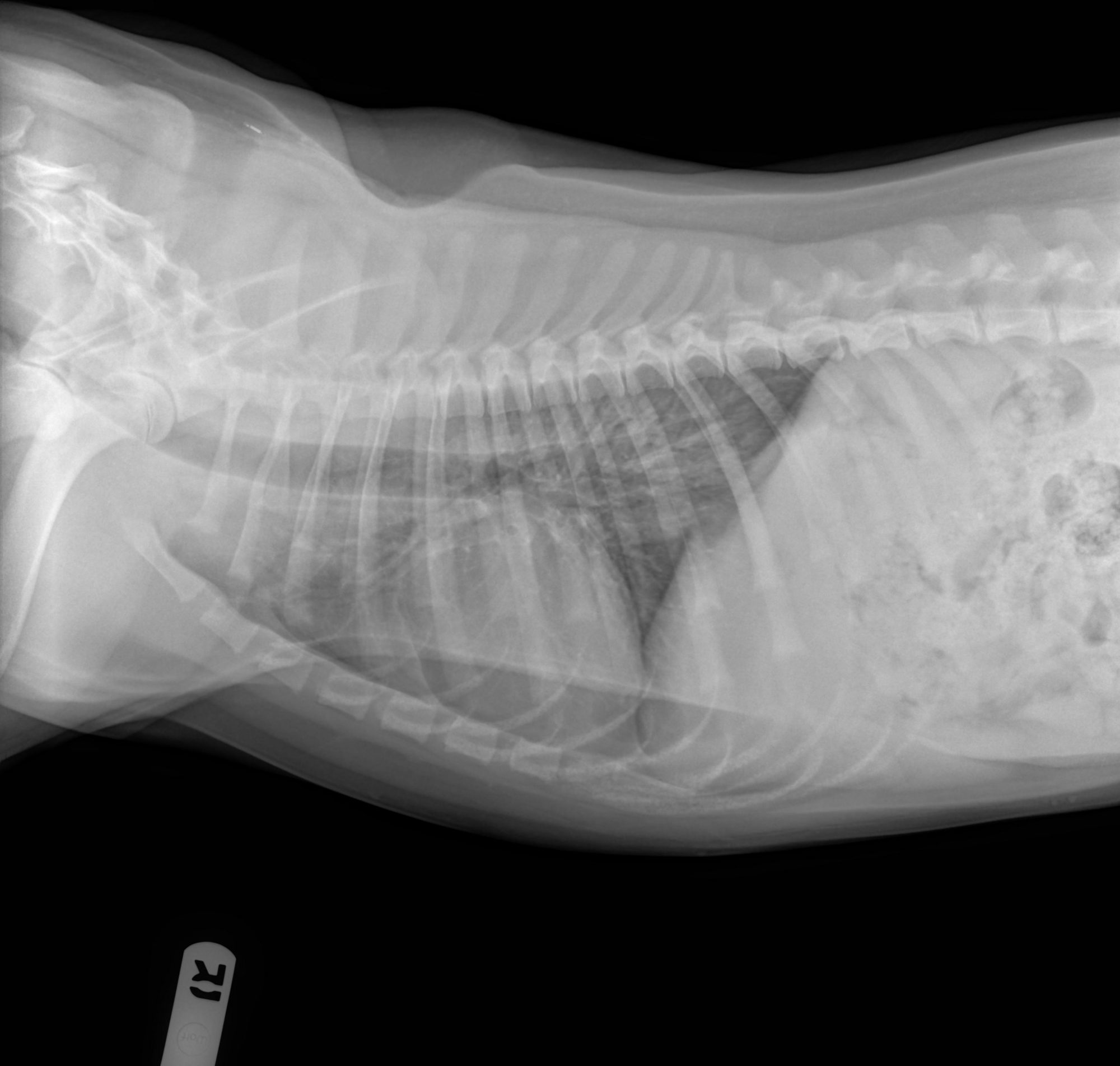
I reviewed the X-rays and was asked if I could help put this poor puppy back together. She was a good candidate for anesthesia and surgery to repair the broken bone. So later that day, Hazel was anesthetized and prepped for surgery.
Realigning the 2 ends of the broken bones several days after the accident was the toughest part. One piece was literally impaled into the other. But we eventually succeeded in realigning the bone nicely.
Surgery involved placing 4 pins to stabilize the fracture.
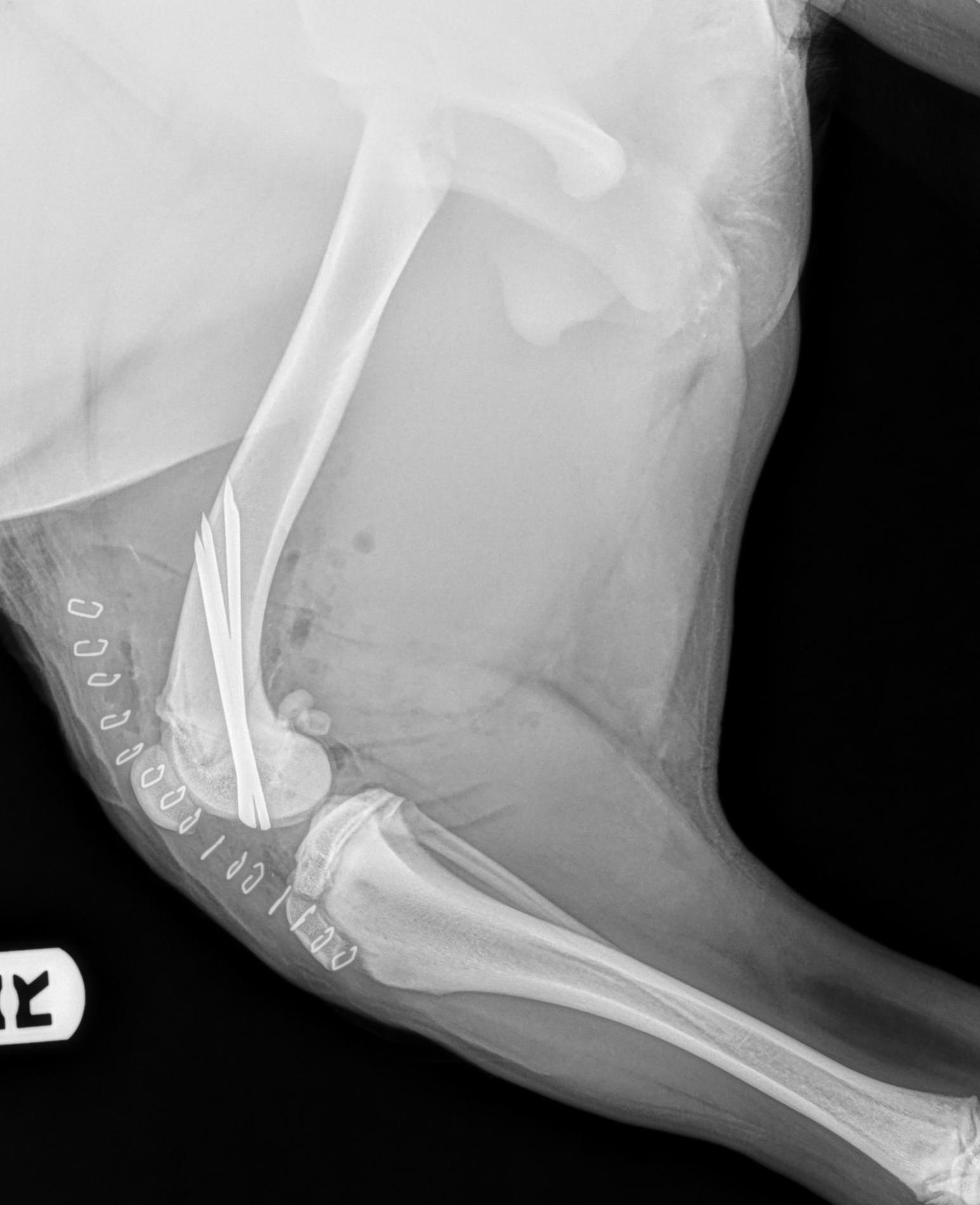
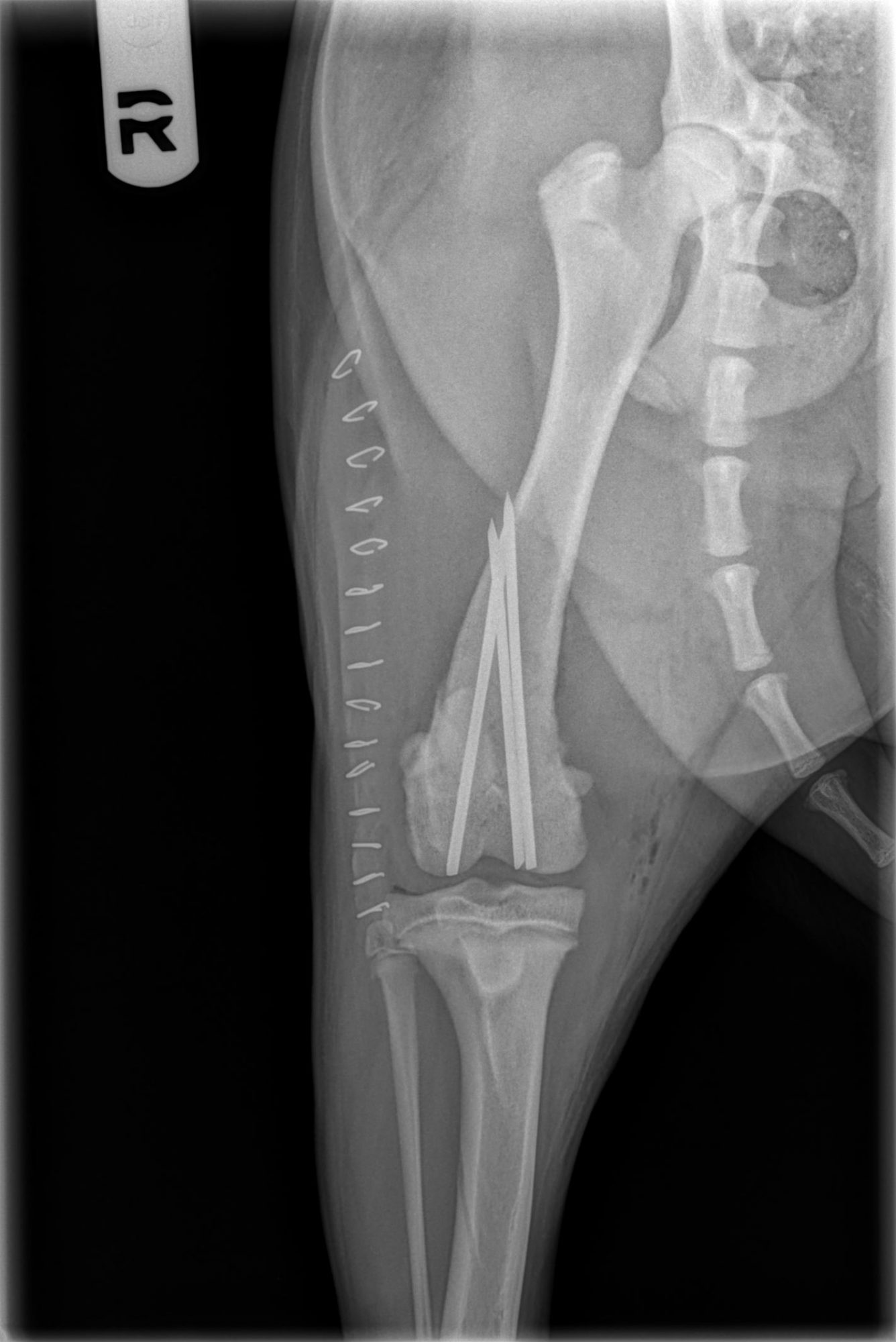
Hazel’s postop care required giving pain medications and antibiotics, 2 weeks in a cone (E collar) and 6 weeks of very strict confinement to a small room.
Six weeks after surgery, her X-rays showed nice healing of the fracture. It is now time to slowly increase her activity over the next 4 weeks so she can resume her crazy happy life of running, playing and catching balls.
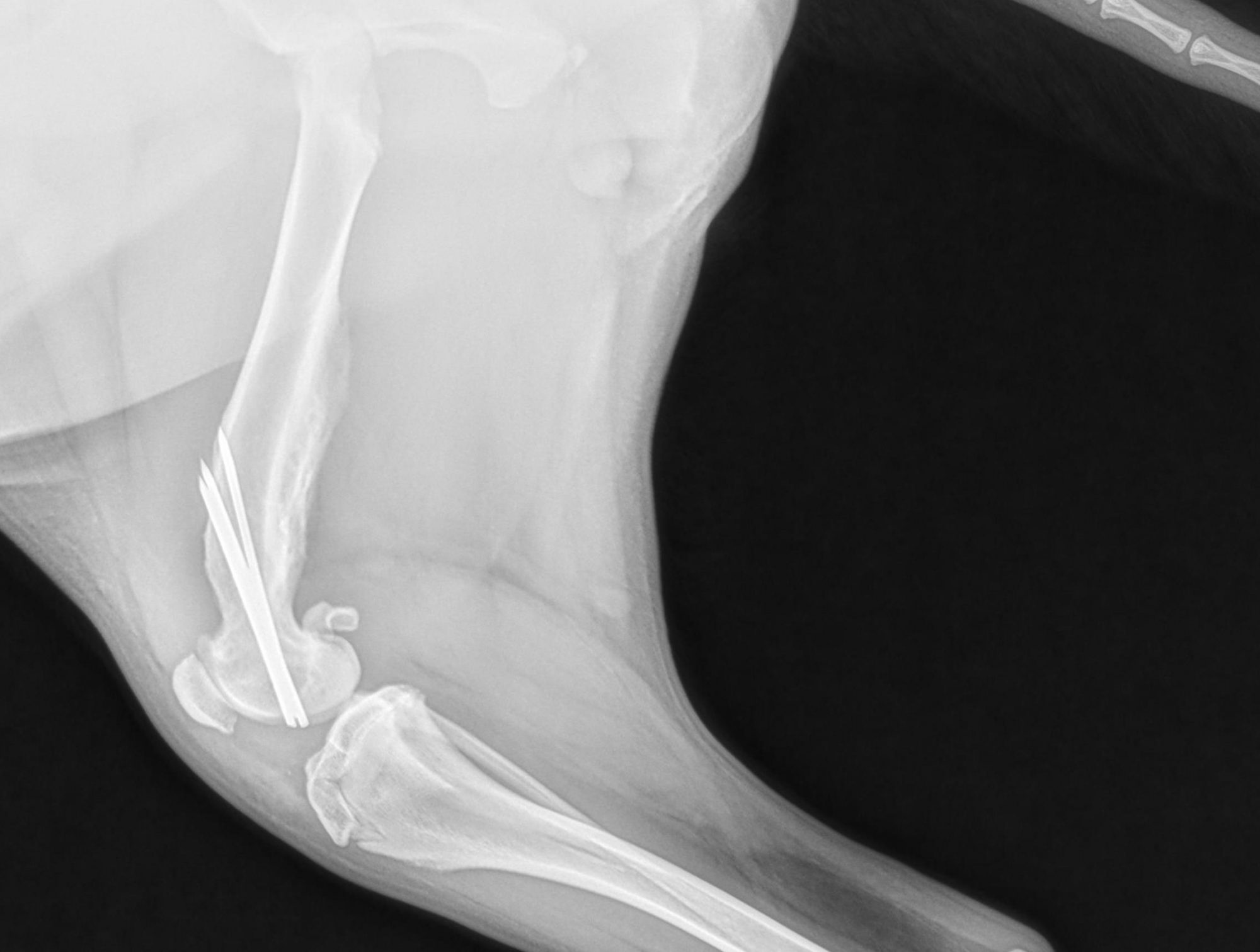
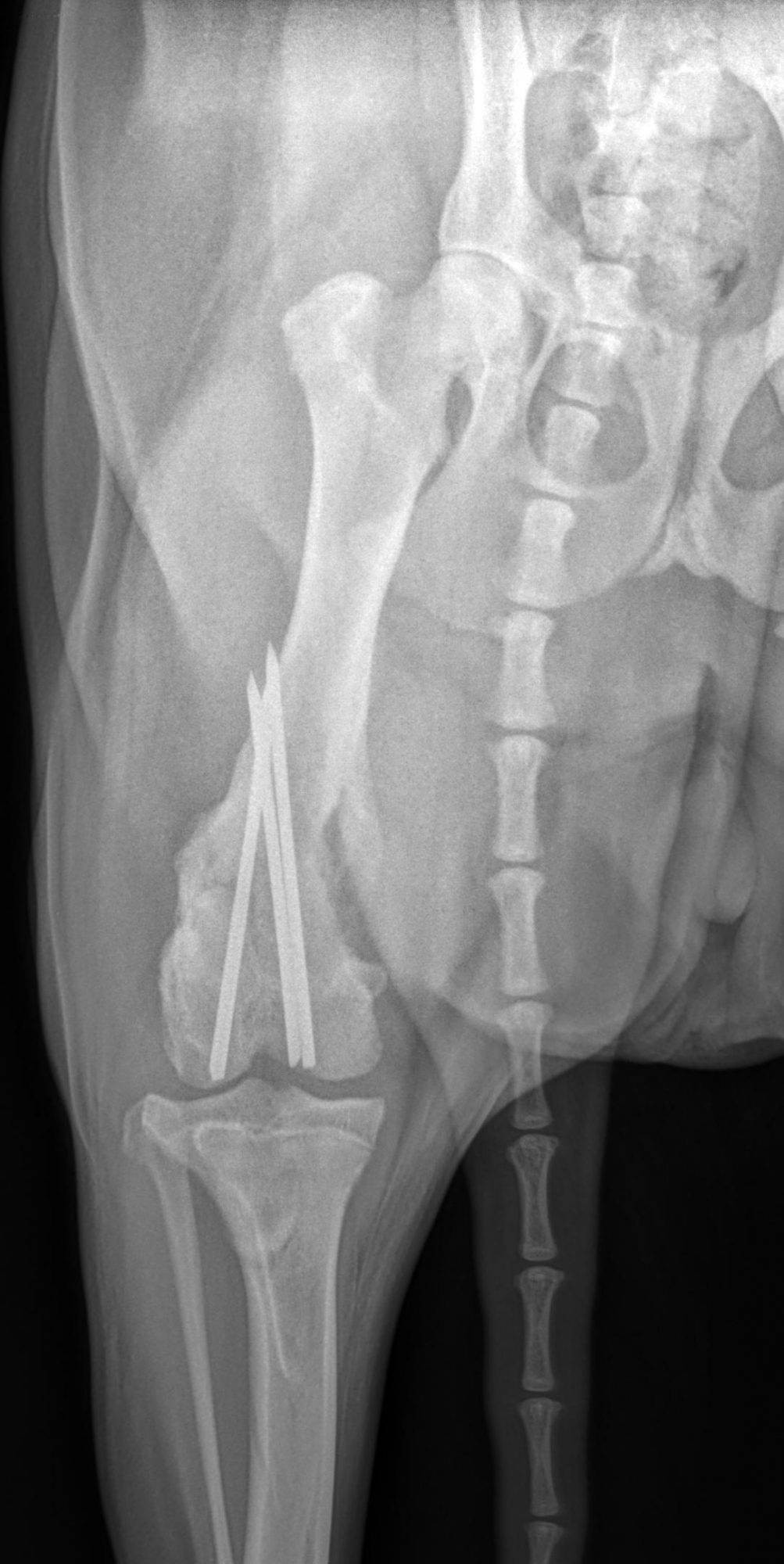
Sadly, this is not an unusual story. Many pets (cats and dogs) are hit by a car in their own driveway (and beyond, of course). Please be safe. The best place for a pet is indoors, especially when there is a moving vehicle in the driveway.
Hazel, despite her ordeal, got lucky. All of her wounds and her fracture were fixable and healed nicely.
Her owner was very happy to report that she was ready to just be a puppy again. “I couldn’t be happier with her progress” he concluded. Now little Hazel can enjoy life again.
Phil Zeltzman, DVM, DACVS, CVJ, Fear Free Certified

Dr. Phil Zeltzman is a traveling veterinary surgeon in Pennsylvania & New Jersey. An award-winning author, he loves to share his adventures in practice along with information about vet medicine and surgery that can really help your pets. Dr. Zeltzman specializes in orthopedic, neurologic, cancer, and soft tissue surgeries for dogs, cats, and small exotics. By working with local family vets, he offers the best surgical care, safest anesthesia, and utmost pain management to all his patients. Sign up to get an email when he updates his blog, and follow him on Facebook, too!
Joshua’s story: taking pain seriously
Joshua, a sweet 3 year old Beagle, had been seen by 3 different family vets to find the source of his pain.
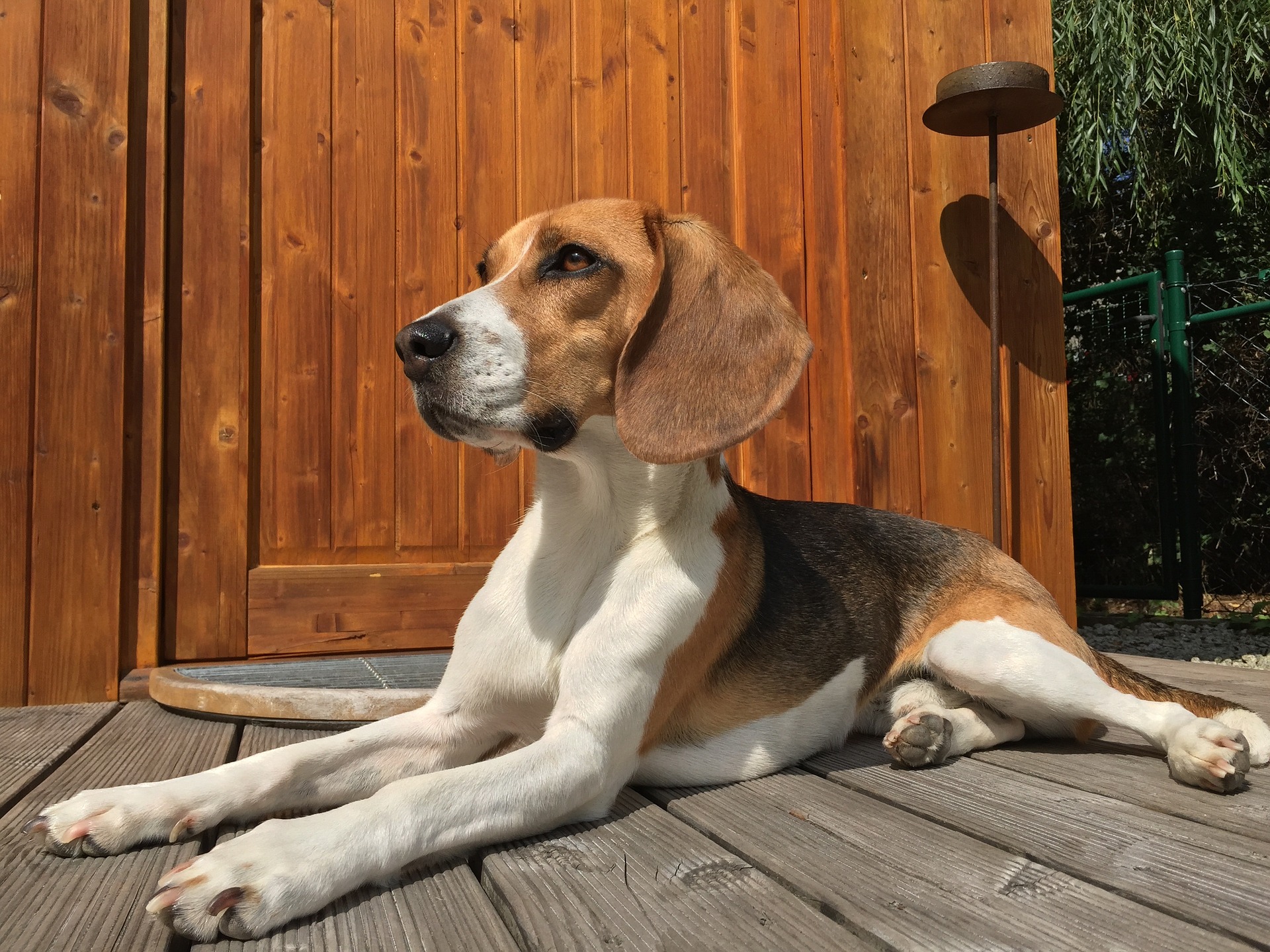
His owner described bizarre signs: trouble wagging and lifting his tail; difficulty urinating and defecating.
Joshua would occasionally chew at his back leg. “Because he was in pain” his owner thought. But nobody would take her seriously.
Overall, the condition seemed to get worse with time, despite several medication trials.
Beagles are prone to slipped discs, but Joshua did not fit the picture. His neurological exam was totally normal except for pain in the lower spine.
That’s when I met Joshua. His physical exam was normal, except that he had mild and consistent pain in his lower spine. Stretching his tail over his back would also cause pain. There were no other significant findings.
I wanted to take Joshua’s pain seriously, so I had a heart-to-heart with his owner. There was clearly something wrong with Joshua. An MRI was the next logical step… and a big leap of faith. His owner consented to it.
The MRI report described that young Joshua (again, a 3 year old) had a mass, most likely a tumor, in his lower spine (between lumbar vertebrae L5 and L6). Even worse, the tumor seemed to be attached to his spinal cord.
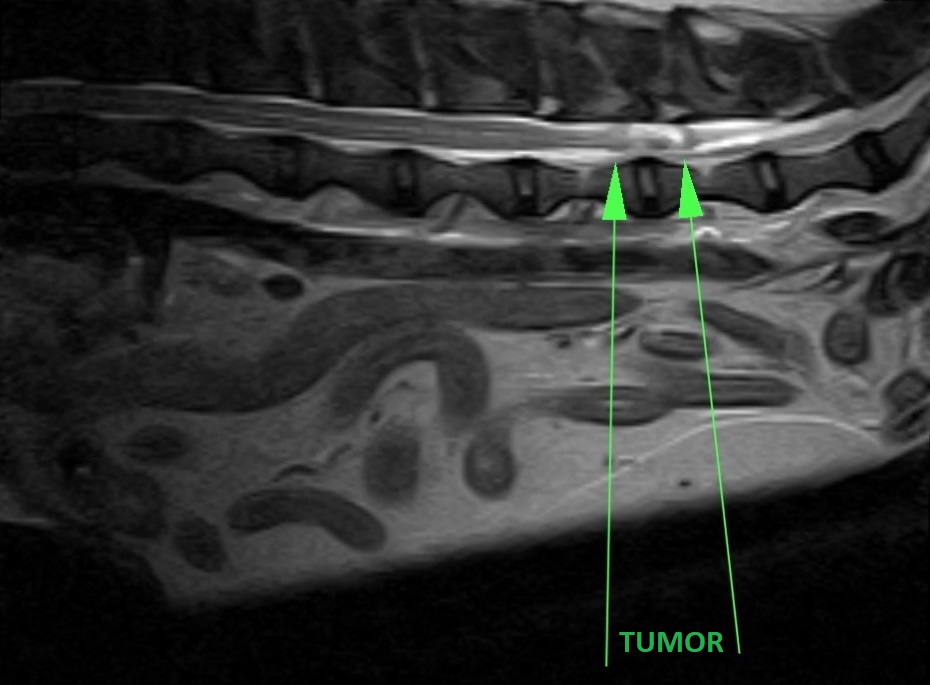
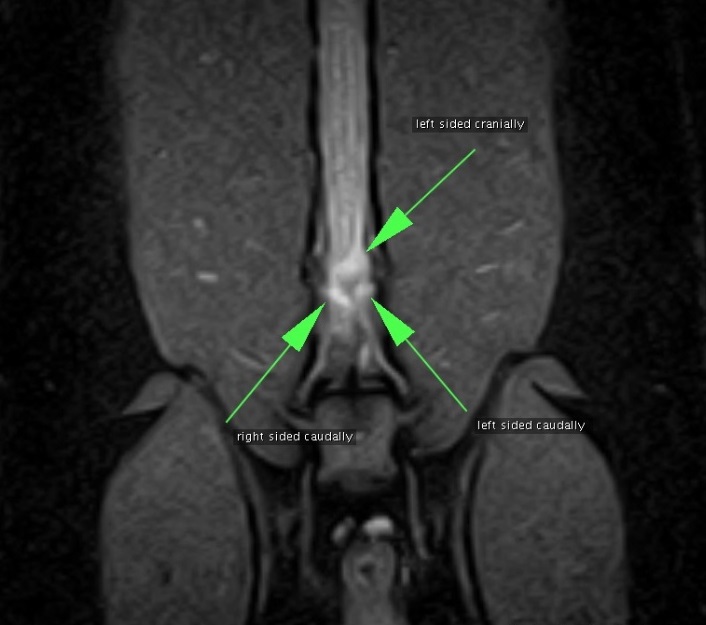
Because she really wanted to help her dog, Joshua’s owner elected surgery. We found exactly what the MRI report had described.
The tumor, which was almost 1 inch in length, could not be completely removed.
WARNING: THE NEXT PICTURE IS GRAPHIC !!!
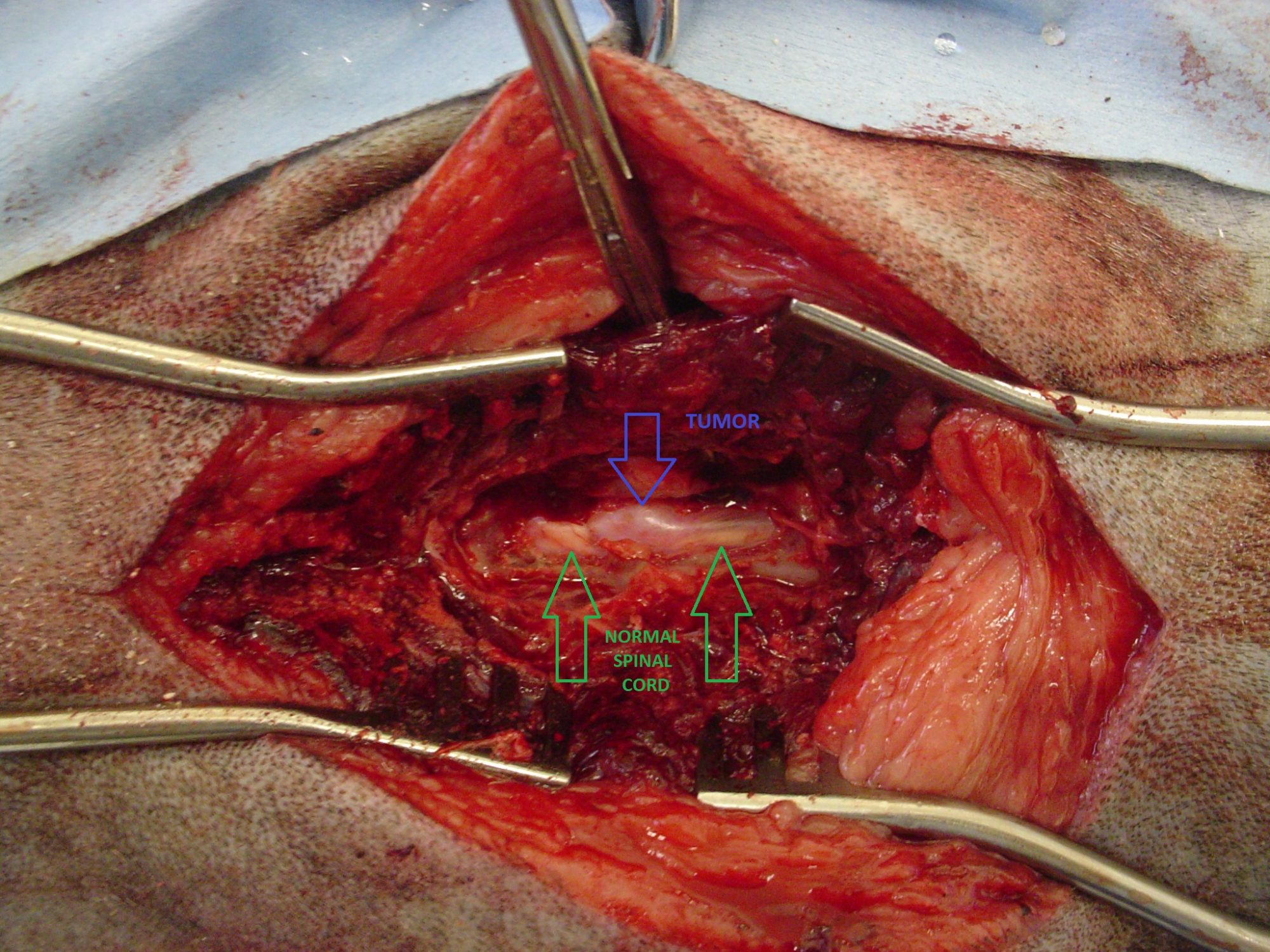
Therefore, we carefully took 3 biopsies of the mass, which in effect, decreased the size of the tumor by two thirds. So we “debulked”‘ the mass, i.e. we removed the bulk of it.
Removing more tumor would have put Joshua’s ability to walk in serious jeopardy.
Spinal surgery is very delicate, so we typically expect worsening of the signs initially. Miraculously, just a few hours after surgery, Joshua stood up and walked! He went home a couple of days after surgery.
One week after surgery, the biopsy came back: Joshua had a bizarre type of cancer called chondrosarcoma, which is an aggressive cancer of cartilage. Luckily, it was slow-growing, or “low grade.”
Two weeks after surgery, Joshua came back to the clinic for staple removal.
His owner was thrilled by his progress, since he had no sign of pain anymore. He was now able to lift and wag his tail. His neurological exam was completely normal. The only concern was occasional fecal incontinence, which we are trying to control with a special diet.
Beyond surgery, there is no good treatment for a “low-grade” chondrosarcoma of the spinal cord. Neither chemotherapy nor radiation therapy is a good option. However, Joshua might benefit from low doses of cortisone.
As your pet’s best advocate, you need to keep pushing until you get the answers you and our pets deserve. If you are not satisfied with the answers you’re getting, you owe it to them to ask more questions, to demand better answers, and, if needed, to be referred to a specialist.
As I always say, “pain is not acceptable.” We have multiple ways to decrease pain, which may or may not involve medications.
Joshua is a perfect example of this philosophy: his owner kept pushing until she found somebody who took her seriously.
This may seem to be a sad story, and it certainly is in a way. But Joshua’s owner and I would rather look at the glass half full: he is currently pain-free and happy, and his owner enjoys her pain-free dog… one day at a time.
Phil Zeltzman, DVM, DACVS, CVJ, Fear Free Certified

Dr. Phil Zeltzman is a traveling veterinary surgeon in Pennsylvania & New Jersey. An award-winning author, he loves to share his adventures in practice along with information about vet medicine and surgery that can really help your pets. Dr. Zeltzman specializes in orthopedic, neurologic, cancer, and soft tissue surgeries for dogs, cats, and small exotics. By working with local family vets, he offers the best surgical care, safest anesthesia, and utmost pain management to all his patients. Sign up to get an email when he updates his blog, and follow him on Facebook, too!
Will Weez need an amputation?
Weez, a cute 12 year old Cockapoo, had a swelling under her left armpit (aka the axilla).
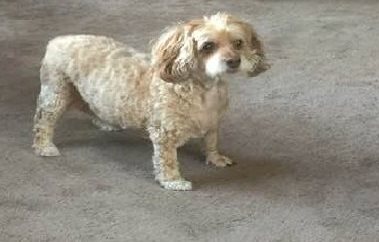
No signs were present otherwise: she was eating, drinking and acting normally.
Since the swelling continued to grow, her owner wisely went to see his family vet. She diagnosed a mass of unknown origin.
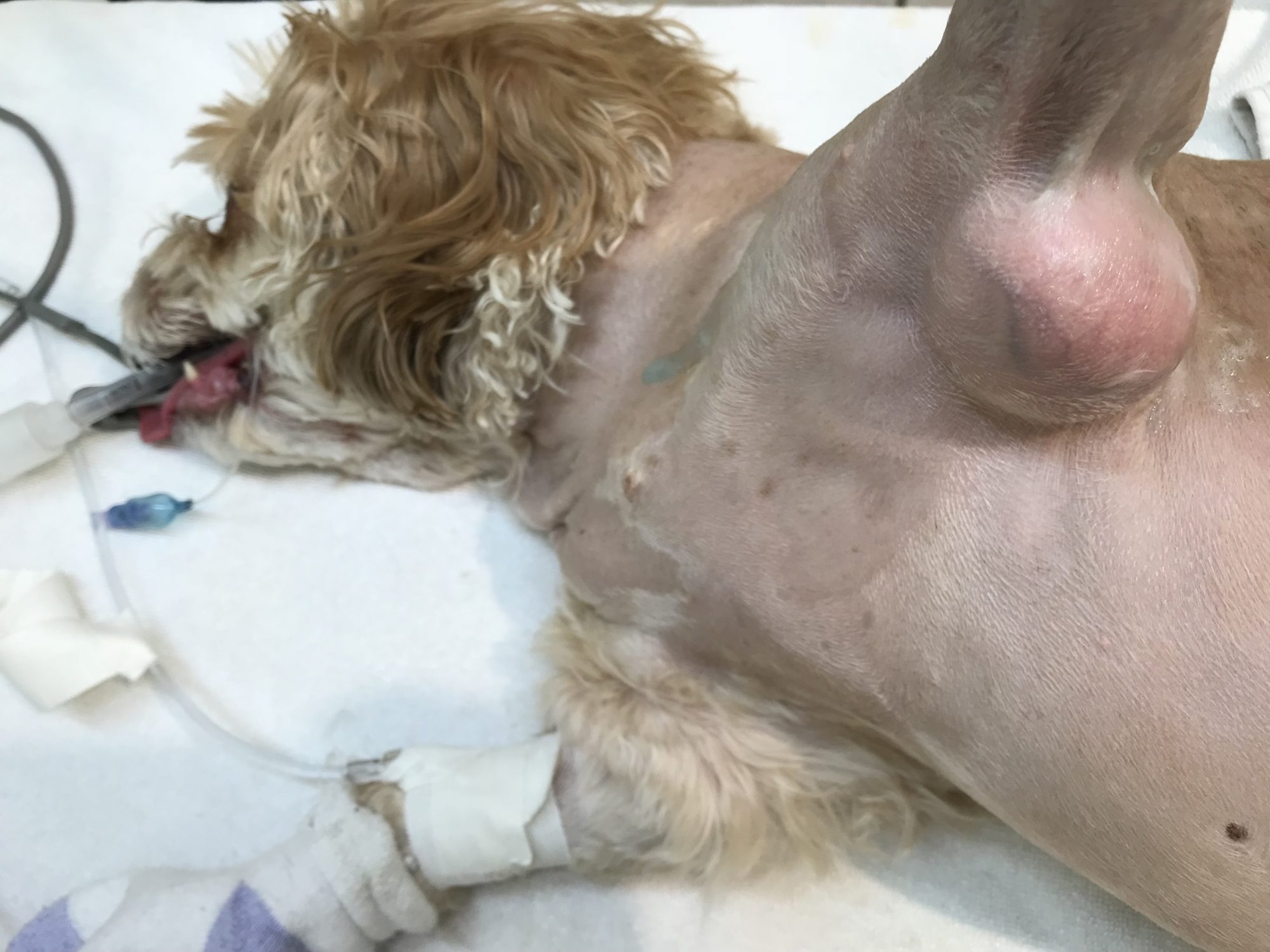
The vet (again, wisely), recommended surgery to remove it and biopsy it.
The suspicion, based on experience, the location of the mass and its fast growth, suggested that it was likely a cancerous mass (soft tissue sarcoma, nerve sheath tumor, lymphoma etc.). In addition, there was a chance that it involved some important nerves in the armpit (aka the brachial plexus).
Since those nerves cannot be sacrificed, we discussed a small possibility of amputation.
A physical exam and blood work confirmed than Weez was a good candidate for anesthesia.
To my relief, my own exam revealed that there was no need to sacrifice the leg!
So we removed the mass uneventfully, and it as sent to the lab for analysis.
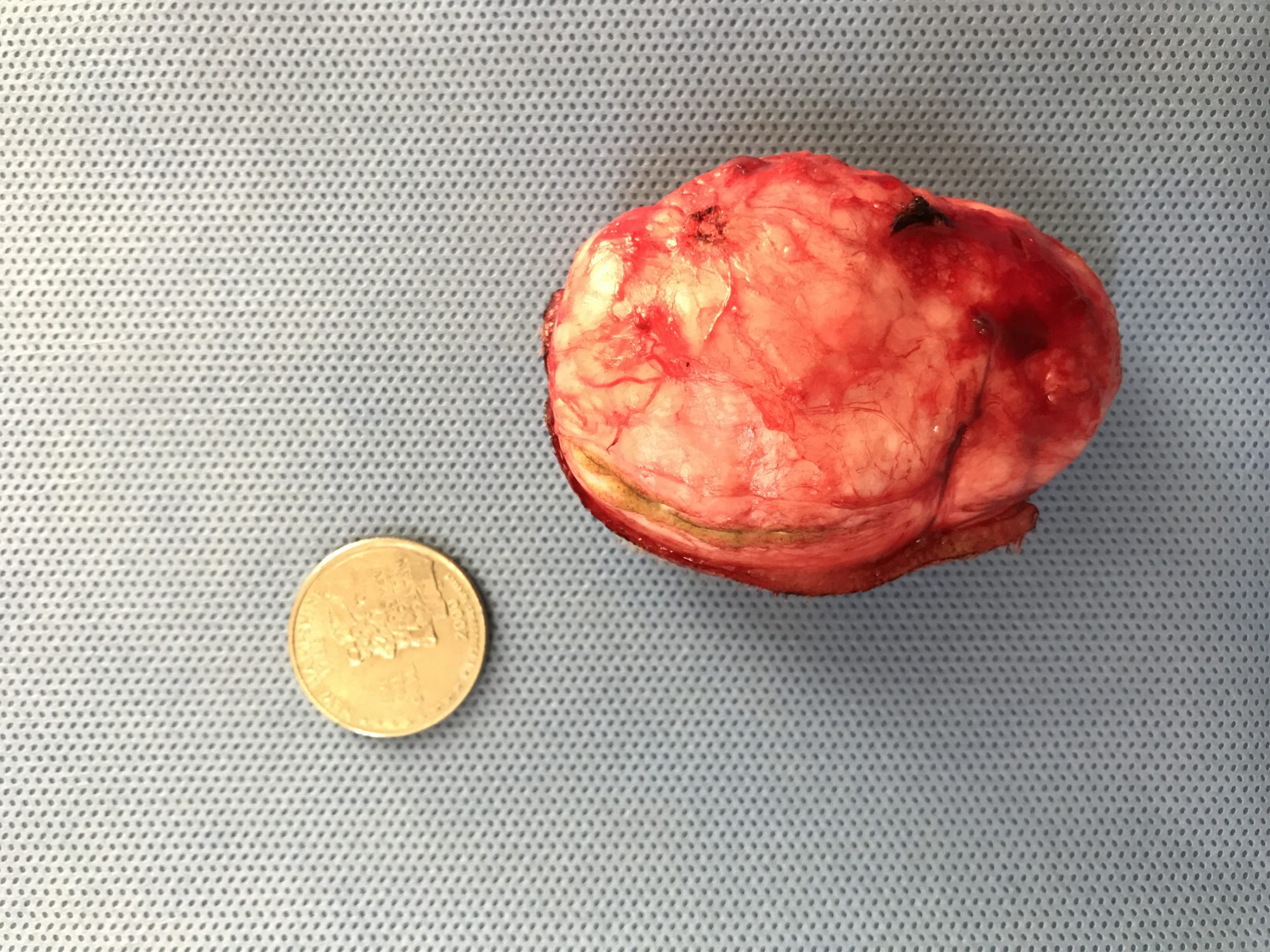
Weez recovered smoothly from anesthesia and surgery, and went home.
Her activity had to be restricted and she had to wear a cone (E-collar) around her beck for 3 weeks. She was also given oral antibiotics and pain medications.
One week later, the results of the biopsy were shocking – in a fantastic way!
Amazingly, the mass was benign! It is called a fibroma, which is a non-cancerous tumor, and very unusual in that location.
There is still a small risk that the tumor can come back, so I asked Weez’s owner to monitor the area by feeling it monthly.
Weez’s owner was ecstatic. He wrote: “Cannot be any happier and blessed to have had Dr. Zeltzman operate on our girl. He was able to remove a tumor and save her leg from being amputated.”
This story reminds me that board-certified cancer specialists (oncologists) and surgeons have 2 similar sayings:
* The 3 deadliest words in the English language are “Just watch it” and
* The 5 deadliest words in the English language are “Keep an eye on it.”
What we mean by that is size doesn’t matter when it comes to masses.
A tiny mass the size of a grain of rice can be cancer.
Bottom line: even though this mass was luckily benign, it is important to remove masses as soon as possible. Have your family vet check your cat or your dog as soon as you notice any lump or bump, so that they can guide you through the next steps.
So please don’t procrastinate. Removing a mass when it’s small is less invasive, less costly, and gives much better chances for a cure.
Phil Zeltzman, DVM, DACVS, CVJ, Fear Free Certified

Dr. Phil Zeltzman is a traveling veterinary surgeon in Pennsylvania & New Jersey. An award-winning author, he loves to share his adventures in practice along with information about vet medicine and surgery that can really help your pets. Dr. Zeltzman specializes in orthopedic, neurologic, cancer, and soft tissue surgeries for dogs, cats, and small exotics. By working with local family vets, he offers the best surgical care, safest anesthesia, and utmost pain management to all his patients. Sign up to get an email when he updates his blog, and follow him on Facebook, too!
Sparky receives the gift of life
It’s lar par season!!!
As the weather gets warmer, I will see more and more dogs suffering from laryngeal paralysis.
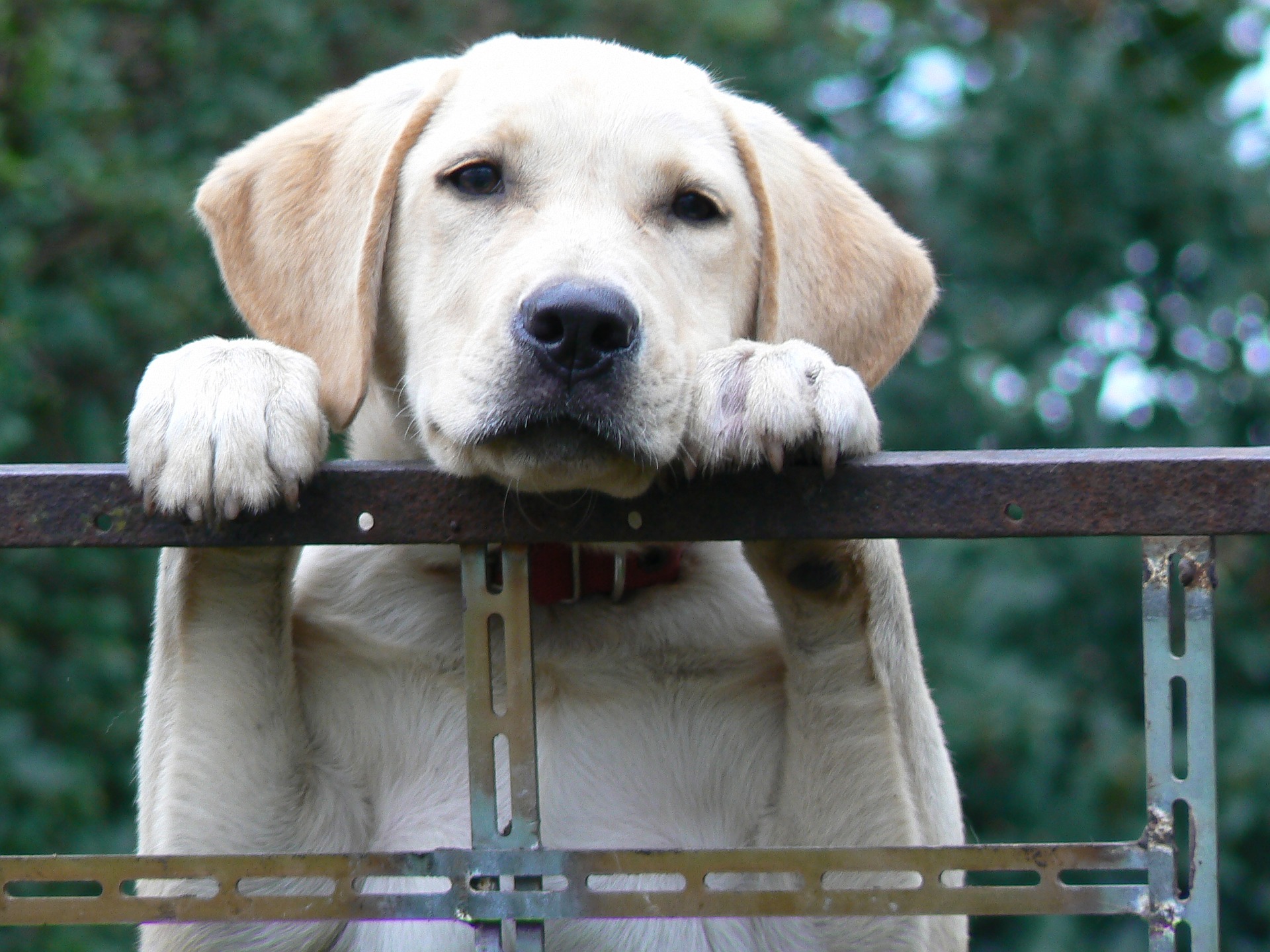
This reminds me of a recent patient with lar par, Sparky, an 11 year old Labrador. He was suffocating and was diagnosed with laryngeal paralysis. This is a serious and stressful condition where the larynx (voice box) doesn’t allow enough oxygen to flow into the lungs.
His condition had been getting worse for about a year, then it suddenly got dramatically worse. When he arrived at Barton Heights Veterinary Hospital (www.bartonheights.com) in Stroudsburg, PA, Sparky had to be placed on oxygen. He was given tranquilizers to decrease the stress of suffocating.
Then something unusual happened. Because he was still struggling, he had to be placed under general anesthesia so that more oxygen could be delivered through a tube placed down the throat and into the windpipe.
This bought time until I was able to drive to the hospital and perform emergency surgery. The goal of surgery is to open up the larynx with permanent sutures (tie back surgery).
Despite a stressful start, Sparky’s surgery and recovery were uneventful.
And that was exactly 2 years ago,
His owner updated us after a year: “Sparky is still with us. We celebrated his one year anniversary last night with some vanilla ice cream. He has lost a lot of his muscle in his back end, but is still ambulatory and it hasn’t stopped him from trying to chase deer in the meadow (though he doesn’t get too far) or climbing up on the furniture (even though he has a comfy bed on the floor).”
How does his owner feel about doing the surgery on a senior dog (11 years of age), in spite of how severe his situation was a year ago?
“It really is miraculous! We are extremely happy – beyond words, really – that Sparky had the surgery and survived the ordeal. If he had lived only a week, or a month after surgery, we would not have regretted his having it, but the fact that he is here a year later certainly underscores why he should have had it. We are so grateful to you for the gift of his life!”
You can watch a quick video of Sparky here: https://youtu.be/fy7dWlAVqnM
So Sparky is breathing well. Yet “He has lost a lot of his muscle in his back end.”
It is possible that he has another nerve condition, related to lar par, that leads to progressive weakness in the back end (visit https://www.cvm.msu.edu/scs/research-initiatives/golpp/living-with-golpp for more info).
Sadly, there is no treatment. Well, besides doing the opposite of what most dogs wants to do: these dogs should not be moping around all day. They should be taken on slow, steady leash walks to keep the muscles as strong as possible.
Few pet owners are as dedicated as Sparky’s owner. She wasn’t about to give up on him without a fight, and the reward is a happy, breathing, deer-chasing Labrador!
Phil Zeltzman, DVM, DACVS, CVJ, Fear Free Certified

Dr. Phil Zeltzman is a traveling veterinary surgeon in Pennsylvania & New Jersey. An award-winning author, he loves to share his adventures in practice along with information about vet medicine and surgery that can really help your pets. Dr. Zeltzman specializes in orthopedic, neurologic, cancer, and soft tissue surgeries for dogs, cats, and small exotics. By working with local family vets, he offers the best surgical care, safest anesthesia, and utmost pain management to all his patients. Sign up to get an email when he updates his blog, and follow him on Facebook, too!
Cartier and the giant surprise…
Cartier, a 12 year old, 10 pound Shih Tzu, was originally seen by her family vet for a walnut-sized mass on the right side of her chest. It looked like a simple skin mass.
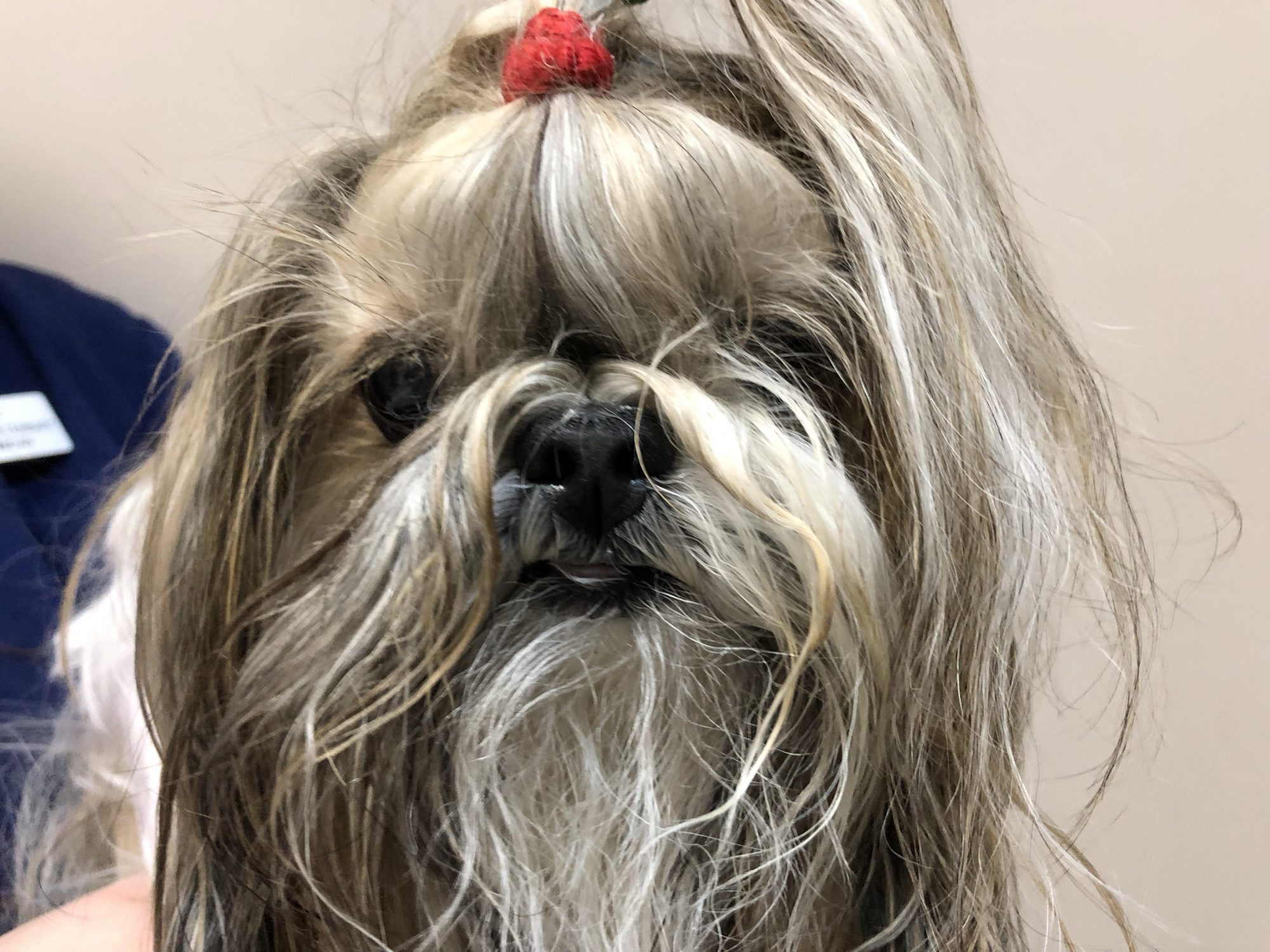
But she soon developed some rather troubling symptoms that had her owners seriously worried. She became lethargic, had difficulty breathing, and even passed out on occasion. What was happening?
Cartier was taken back to her family vet, where X-rays and blood were taken to find out what was going on. The blood work was normal, but shockingly, X-rays revealed that Cartier’s skin mass extended deep into her chest. It was so large, that it crossed to the other side of the chest!
The X-ray below shows the skin mass (green arrow), the chest mass (red arrow) and the heart (blue arrow).
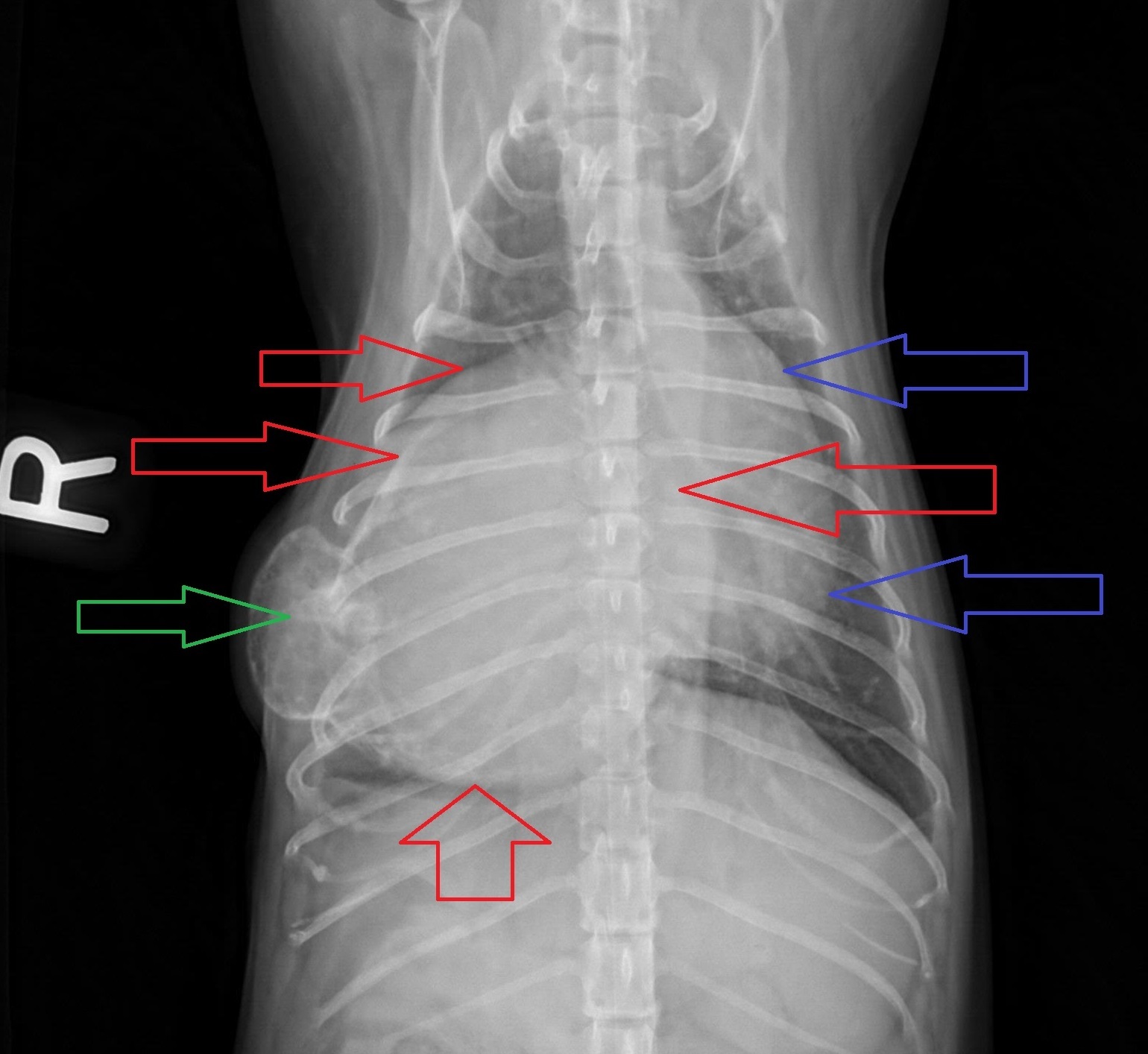
A cat scan of the chest was then performed to better understand what was going on inside the chest, and to make sure the mass had not spread anywhere. There was only one mass (between the colored arrows) but it was almost three times the size of her heart! This explained her symptoms. The only option to help Cartier was to remove the mass.
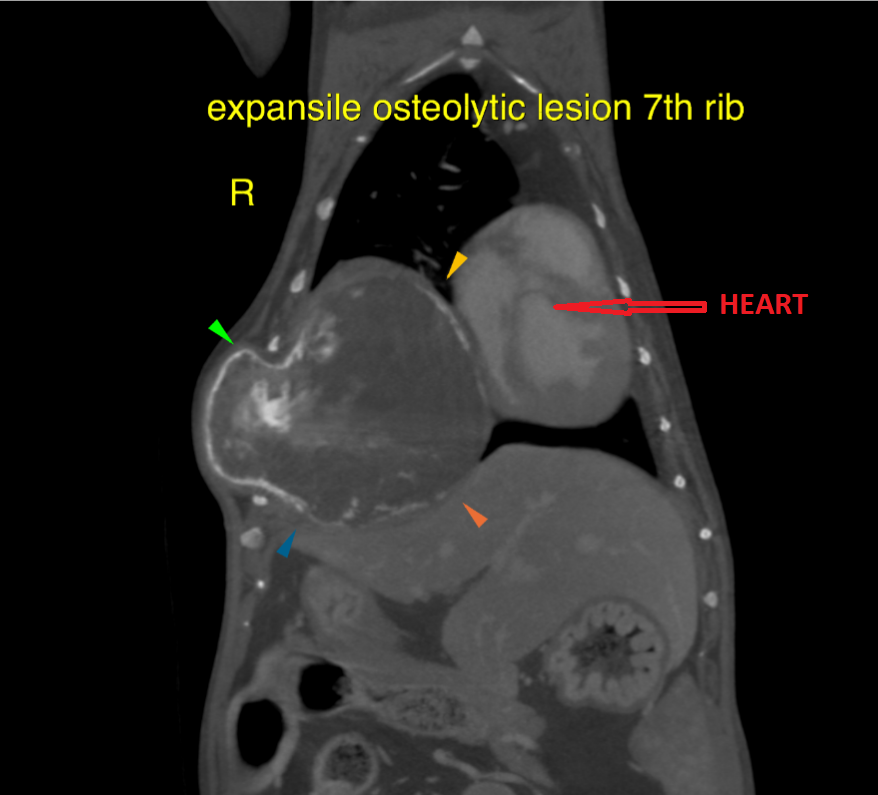
So I was called in to perform the surgery. On X-rays and on the cat scan, the mass appeared to involve a single rib, but that meant that several ribs would have to be removed in order to successfully remove the mass.
A total of 3 ribs had to be removed, along with the mass, without damaging the heart, the lungs, or any other vital structure. And remember, Cartier only weighed 10 lbs…
By the time we got done, the defect in the chest wall was so big, that it was not possible to put the remaining ribs back together. So the defect was reconstructed with nylon mesh in order to close the chest cavity.
Next, air from her chest had to be removed to allow her to breathe on her own once anesthesia was over. So we used a special plastic drain called a chest tube. Surgery was delicate, but it went well and Cartier bounced back remarkably quickly for an older lady. This is a video of her, walking around the day after surgery (chest tube still in place).
The chest tube was removed a few days after surgery and she went home safely.
The mass was sent to the lab to be biopsied. One week later, the results came back as bone cancer (osteosarcoma). This was one of the 2 most likely diagnoses. The other most likely possibility was cartilage cancer (chondrosarcoma).
One month after surgery, Cartier’s owners were happy to report that she had more energy, ran around, had bright eyes, and seemed to be back to normal. Her personality had come back, she had a hop in her step, seemed much more comfortable and no longer struggled to breathe.
Twelve year old Cartier now had a new lease on life.
Her owners said: “we couldn’t have asked for better results.”
Addendum:
I am thrilled to report that as of July 2019, Cartier, the now 13 year old, is still doing well.
This is 7 months after surgery.
Phil Zeltzman, DVM, DACVS, CVJ, Fear Free Certified

Dr. Phil Zeltzman is a traveling veterinary surgeon in Pennsylvania & New Jersey. An award-winning author, he loves to share his adventures in practice along with information about vet medicine and surgery that can really help your pets. Dr. Zeltzman specializes in orthopedic, neurologic, cancer, and soft tissue surgeries for dogs, cats, and small exotics. By working with local family vets, he offers the best surgical care, safest anesthesia, and utmost pain management to all his patients. Sign up to get an email when he updates his blog, and follow him on Facebook, too!

